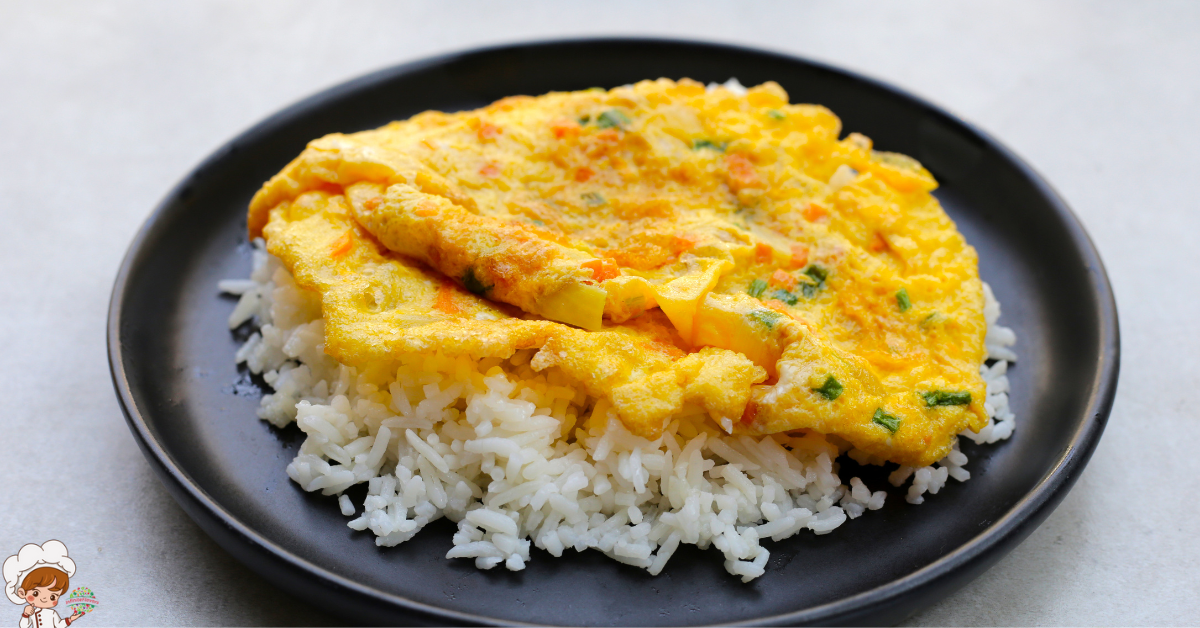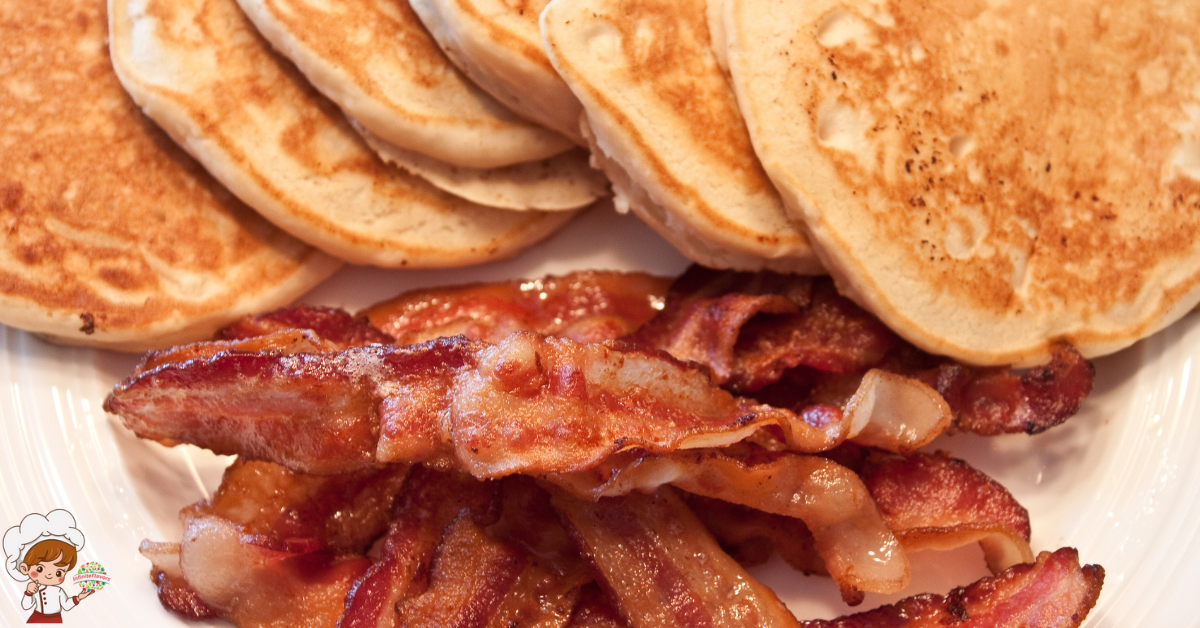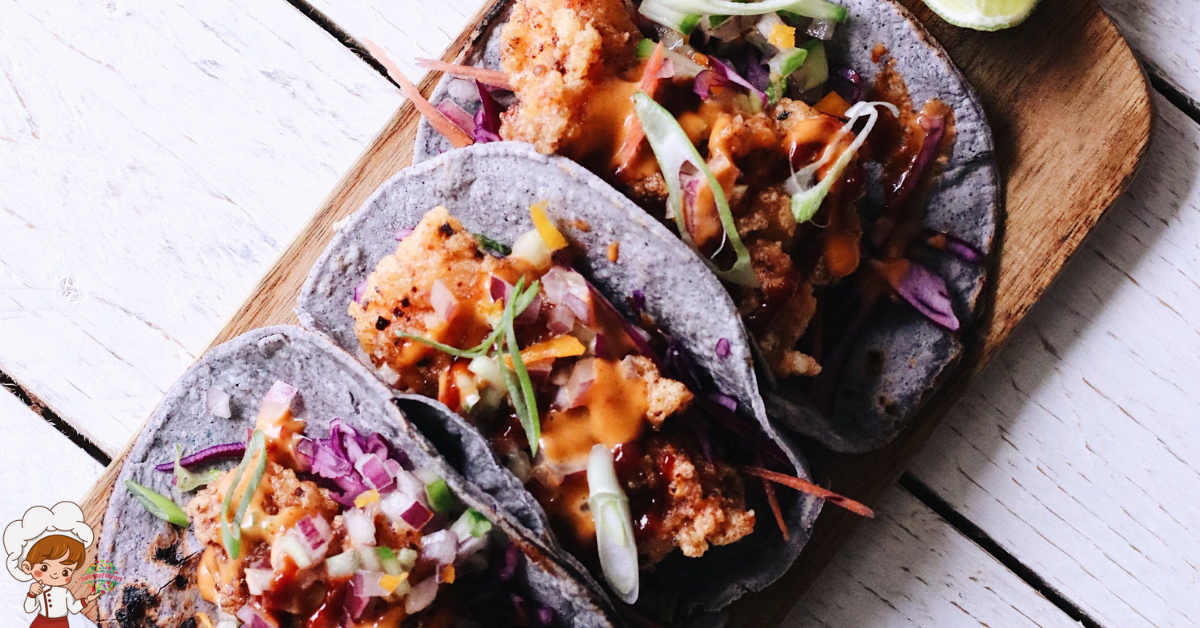History And How To Make Zucchini Bread
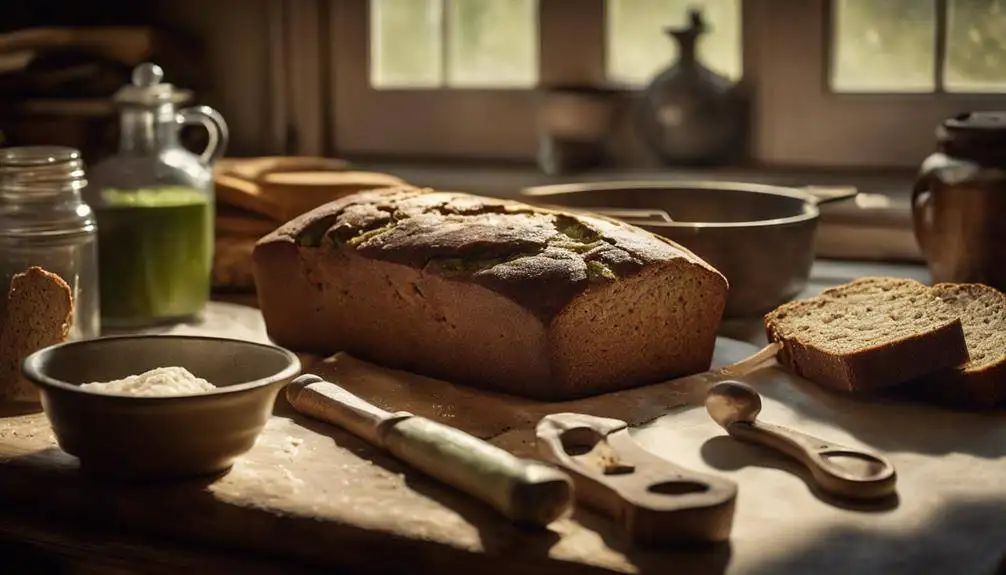
History And How To Make Zucchini Bread; Zucchini bread has its roots in the 1960s, when gardeners sought ways to use excess summer squash. It’s a quick bread, meaning it’s easy to make without the hassle of yeast. To whip up your own, preheat your oven to 350°F. Mix 2 cups of grated zucchini, 1½ cups of flour, 1 tsp baking soda, ½ tsp baking powder, 1 cup sugar, ½ cup oil, and 2 eggs. Pour the batter into a greased loaf pan and bake for 50-60 minutes. Curious about tips for perfecting your bread or common mistakes to avoid? There’s more to discover!
Elevate Your Baking—Click Here To Get Your Perfect Pans and Sheets Today
Origins of Zucchini Bread

Zucchini bread likely emerged in the late 20th century as a creative way to use up excess summer squash from home gardens. As you explore the origins of this delicious treat, you’ll discover that zucchini cultivation became increasingly popular during this time. Home gardeners found themselves with more squash than they could handle, leading to inventive recipes. Zucchini bread was born out of necessity, transforming surplus produce into a moist, flavorful loaf that could be enjoyed by family and friends.
Regional variations played a significant role in the development of zucchini bread recipes. In some areas, bakers added spices like cinnamon and nutmeg, while others incorporated nuts or chocolate chips for added texture and sweetness. You might find that certain regions favor a denser, cake-like consistency, while others prefer a lighter, bread-like texture. These variations reflect local tastes and the creativity of home chefs experimenting with their harvests.
The rise of zucchini bread not only showcased the versatility of summer squash but also highlighted the importance of seasonal cooking. You can see how this humble loaf became a staple in many households, providing a delicious way to enjoy the fruits of your labor. By blending flavors and textures, zucchini bread has firmly established itself in the culinary landscape, appealing to bakers and eaters everywhere. So next time you whip up a batch, remember its origins and the journey it took from garden to table.
The Zucchini Boom of the 1960s

During the 1960s, home gardeners frequently found themselves overwhelmed with an abundance of zucchini, sparking a culinary craze that led to the creation of various innovative recipes, including the beloved zucchini bread. As you might imagine, zucchini cultivation became a staple for many households during this decade. With its easy growth and prolific yield, zucchini quickly became a symbol of 1960s trends in home gardening.
People discovered that this versatile vegetable could be transformed into a variety of dishes beyond the typical sauté or stir-fry. Zucchini bread emerged as a popular way to use up surplus squash, combining the mild flavor of zucchini with sweet and savory ingredients. You could find recipes that ranged from classic sweet loaves to savory versions made with cheese and herbs, ensuring everyone could enjoy this adaptable treat.
The zucchini boom also inspired community gatherings and potlucks, where sharing dishes made from homegrown produce became a cherished tradition. As you joined friends and neighbors, you likely tasted different interpretations of zucchini bread, each reflecting the unique touch of the cook. This era not only celebrated the vegetable itself but also promoted the idea of sustainable living through home gardening.
Evolution of Quick Breads
Quick breads have a fascinating history that shapes what you enjoy today. You’ll find that the origins, key ingredients, and modern baking techniques have all evolved markedly over time. Let’s explore how these changes have influenced the way we make and savor quick breads.
Origins of Quick Breads
Many people enjoy the convenience of quick breads, which have evolved over time to offer a faster and simpler baking option compared to traditional yeast breads. Quick bread history traces back to the early 19th century when baking soda and baking powder were introduced as leavening agents. These innovations transformed how you approach baking, allowing you to skip the lengthy fermentation process associated with yeast.
As you explore the origins of quick breads, you’ll notice a shift in baking techniques. Traditional methods required kneading and rising, which could take hours. With quick breads, you mix ingredients and bake immediately, making them perfect for busy lifestyles. This evolution reflects broader changes in society, where convenience became increasingly valued.
The rise of quick breads also coincided with the availability of new ingredients and tools, paving the way for creative recipes. You can now find a variety of quick breads, from banana to zucchini, each offering a unique flavor and texture. Understanding these origins not only enhances your appreciation for quick breads but also inspires you to experiment with your own baking adventures.
Elevate Your Baking—Click Here To Get Your Perfect Pans and Sheets Today
Key Ingredients Evolution
The evolution of key ingredients in quick breads reflects the changing tastes and nutritional preferences of bakers over the years. When you think about zucchini bread, consider how zucchini varieties have expanded from the traditional green squash to include yellow and even striped options. Each type brings its own unique flavor and moisture content, allowing you to experiment and find the perfect match for your recipe.
Ingredient substitutions have also played a significant role in this evolution. You might swap out all-purpose flour for whole wheat or gluten-free alternatives, catering to dietary needs while still achieving a delicious loaf. You can even replace sugar with healthier options like applesauce or maple syrup, making your zucchini bread more nutritious without sacrificing taste.
As you explore these changes, you’ll notice how modern bakers embrace creativity. Whether you’re using different zucchini varieties or experimenting with ingredient substitutions, each choice reflects a personal touch that honors both tradition and innovation. This adaptability guarantees that zucchini bread remains a beloved staple in kitchens, evolving alongside our ever-changing culinary landscape.
Modern Baking Techniques
In today’s kitchens, modern baking techniques have transformed how you approach making zucchini bread, emphasizing efficiency and precision while enhancing flavor and texture. With the rise of baking science, you can now measure ingredients more accurately, ensuring consistent results every time.
Using artisan methods, you can elevate your zucchini bread by incorporating unique flavor infusions such as citrus zest or nuts. These techniques not only enhance the taste but also create a more appealing texture. Plus, if you’re catering to dietary needs, gluten-free options are widely available, allowing everyone to enjoy this delicious treat without compromise.
Sustainable practices are also gaining traction in baking. You can choose organic flour and locally sourced zucchinis, making your zucchini bread not only tastier but also more environmentally friendly. Additionally, modern storage methods help you preserve your bread longer, reducing waste.
Popular Ingredients and Variations
When you think about zucchini bread, a few classic ingredients probably come to mind, like flour, sugar, and, of course, fresh zucchini. But there are so many creative variations you can try to make it your own. Let’s explore some popular ingredients and exciting twists to elevate your zucchini bread game!
Common Zucchini Bread Ingredients
Zucchini bread boasts a delightful mix of ingredients that enhance its moist texture and rich flavor. The star ingredient, of course, is zucchini. You can choose from various zucchini varieties, like Green Zucchini, Yellow Squash, or even the striking Romanesco. Each type contributes a unique taste and color to your bread.
Along with zucchini, you’ll typically use all-purpose flour, sugar, eggs, and oil. The oil helps keep the bread moist, while the sugar balances the earthy flavor of the zucchini. Baking soda and baking powder provide the necessary lift for a light, airy crumb. Don’t forget the spices! Cinnamon and nutmeg are popular choices, adding warmth to each bite.
If you want to play around with ingredient substitutions, consider using whole wheat flour for added nutrition or substituting applesauce for some of the oil to cut down on fat. You can also use maple syrup instead of sugar for a different sweetness profile. These thoughtful substitutions can tailor the bread to your taste preferences while maintaining that signature moistness you love. Enjoy experimenting with these common ingredients to create your perfect zucchini bread!
Creative Ingredient Variations
Experimenting with creative ingredient variations can elevate your zucchini bread to new flavor heights. Start by swapping out traditional sugar for alternative sweeteners like honey or maple syrup to give your bread a unique twist. Consider adding flavor enhancers like vanilla extract or almond extract to enhance the overall taste.
Nut variations can also add delightful crunch. Try walnuts, pecans, or even hazelnuts for a different texture. For those who love spices, spice additions like cinnamon, nutmeg, or ginger can provide warmth and depth. Don’t hesitate to mix in fruit combinations like cranberries, blueberries, or even chocolate chips for a sweet surprise.
If you’re looking for a lighter option, explore dairy substitutes such as almond milk or coconut yogurt. For gluten-free options, substitute regular flour with almond flour or oat flour, ensuring everyone can enjoy your creation. Finally, don’t shy away from savory twists; adding cheese, herbs, or even sun-dried tomatoes can transform your zucchini bread into a mouthwatering dish perfect for any meal. Each variation opens up a world of flavor possibilities, so let your creativity shine!
Health Benefits of Zucchini
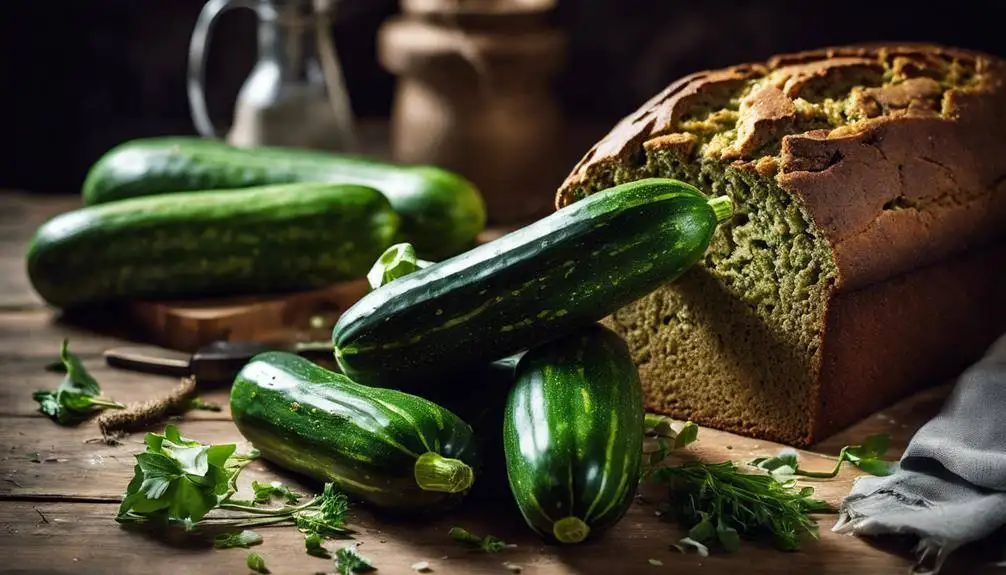
One of the standout features of zucchini is its impressive nutritional profile, offering numerous health benefits that can enhance your diet. This versatile vegetable is low in calories and packed with essential vitamins and minerals, making it a fantastic addition to your meals. Zucchini is rich in vitamin C, which supports your immune system, and contains vitamin A, promoting healthy skin and vision. It’s also a good source of potassium, aiding in heart health and maintaining proper blood pressure.
Incorporating zucchini into your culinary uses is easy, as it can be enjoyed in various forms. Whether you spiralize it into noodles, grill it as a side dish, or bake it into delicious zucchini bread, you’ll find ways to reap its health benefits. The high water content in zucchini helps keep you hydrated, while its dietary fiber promotes digestive health and can aid in weight management.
Moreover, zucchini is known for its antioxidant properties, which help combat oxidative stress and reduce the risk of chronic diseases. By adding zucchini to your diet, you’re not just enjoying its mild flavor and versatility; you’re also fueling your body with nutrients that support overall wellness.
Elevate Your Baking—Click Here To Get Your Perfect Pans and Sheets Today
Essential Baking Tools Needed
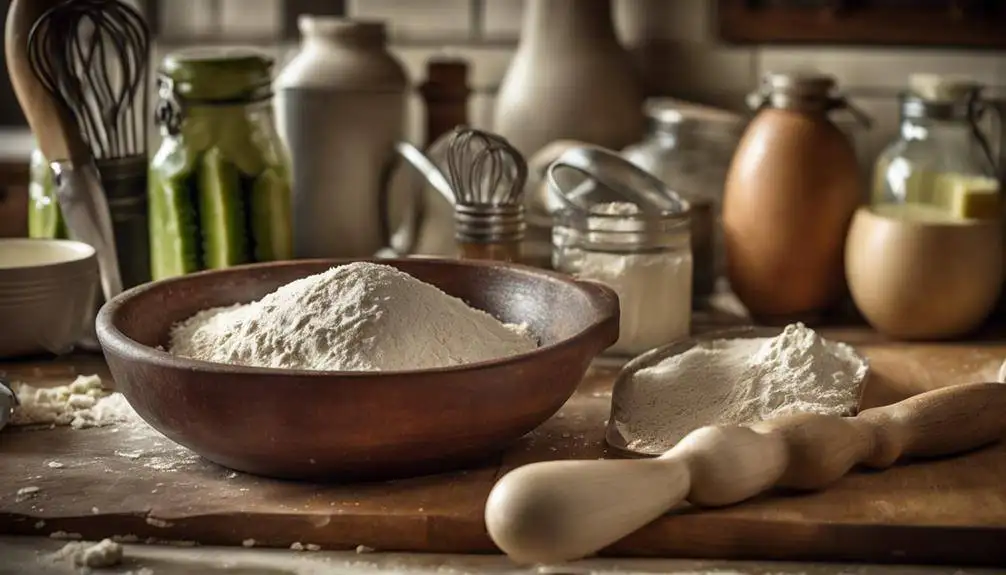
When you’re ready to bake zucchini bread, having the right tools is essential. You’ll want to gather basic mixing tools, measuring equipment, and the perfect baking pan. Let’s explore what you need to make your baking experience smooth and enjoyable.
Basic Mixing Tools
Gathering the right mixing tools is essential for achieving the perfect zucchini bread texture and flavor. Start with mixing bowls—opt for a few different sizes to accommodate various ingredients. A medium bowl works well for combining wet ingredients, while a larger bowl is ideal for mixing dry ingredients and bringing everything together.
Next, consider whisk types. A standard balloon whisk is perfect for aerating your batter, ensuring a light and fluffy texture. If you prefer a more thorough mix, a flat whisk can help you scrape the sides of your bowls effectively. Don’t forget a sturdy spatula for folding in the zucchini and other ingredients gently without overmixing, which can lead to a dense bread.
Lastly, a hand mixer can be a great choice if you want to save time and effort. Just make sure it’s powerful enough to handle the moisture from the zucchini. With these basic mixing tools, you’ll be well-equipped to create a delicious zucchini bread that’s both moist and flavorful. So, gather your tools, and let’s get baking!
Measuring Equipment Essentials
Accurate measuring equipment is essential for ensuring your zucchini bread turns out perfectly every time. When you’re baking, precision is key, and having the right tools can make all the difference. Start with a reliable set of measuring spoons. They’ll help you get the right amounts of baking powder, salt, and spices. Remember, even a slight variation can alter the texture and flavor of your bread.
Next, invest in a kitchen scale. Weighing ingredients like flour and zucchini can provide a more accurate measurement than volume alone. This is especially important for recipes that require a specific consistency. Plus, using a kitchen scale can help you scale your recipe up or down easily, depending on how much zucchini bread you want to make.
If you don’t already have these tools, they’re worth adding to your kitchen arsenal. With the right measuring spoons and a kitchen scale, you’ll feel more confident in your baking, and your zucchini bread will come out deliciously consistent every time. So, gather these essentials, and you’re one step closer to mastering the art of zucchini bread. Happy baking!
Baking Pan Options
Choosing the right baking pan is essential for achieving that perfect zucchini bread texture and flavor. A standard loaf pan is a classic choice, giving you a traditional shape and an even bake. If you’re looking for individual servings, a muffin tin works wonders, allowing you to create delightful zucchini muffins that are easy to share or freeze. For those who prefer smaller portions, mini loaf pans are fantastic, providing a charming presentation and quicker baking time.
You might also consider silicone molds, which are flexible and non-stick, making it easy to pop out your bread without any fuss. Disposable pans are great for gifting or potlucks, as they eliminate the need to return bakeware. If you want a more rustic look, ceramic bakeware can add a touch of elegance while ensuring even heat distribution.
No matter which option you choose, make sure to adjust your baking time accordingly. Each type of pan influences the cooking process, so keep an eye on your zucchini bread to achieve that golden-brown finish. Happy baking!
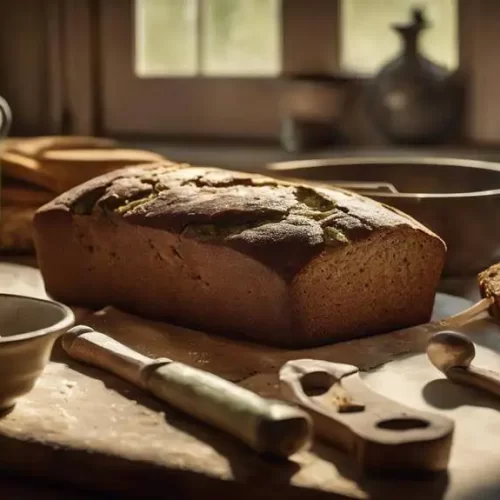
Zucchini Bread Recipe
Ingredients
- Ingredients:
- 2 cups grated zucchini about 2 medium zucchinis
- 2 cups all-purpose flour
- 1 teaspoon baking soda
- 1 teaspoon baking powder
- 1 teaspoon ground cinnamon
- 1/2 teaspoon ground nutmeg
- 1/2 teaspoon salt
- 3/4 cup granulated sugar
- 3/4 cup brown sugar packed
- 1/2 cup vegetable oil
- 1/2 cup unsweetened applesauce
- 3 large eggs
- 2 teaspoons vanilla extract
- 1/2 cup chopped walnuts or pecans optional
- 1/2 cup raisins or chocolate chips optional
Instructions
- Instructions:
- Preheat the Oven:
- o Preheat your oven to 350°F (175°C). Grease and flour a 9×5-inch loaf pan or line it with parchment paper.
- Prepare the Zucchini:
- o Wash and grate the zucchini using a box grater or food processor. Place the grated zucchini in a clean kitchen towel or cheesecloth and squeeze out excess moisture. Set aside.
- Mix Dry Ingredients:
- o In a medium bowl, whisk together the flour, baking soda, baking powder, cinnamon, nutmeg, and salt. Set aside.
- Mix Wet Ingredients:
- o In a large bowl, combine the granulated sugar, brown sugar, vegetable oil, applesauce, eggs, and vanilla extract. Beat until well combined.
- Combine Ingredients:
- o Gradually add the dry ingredients to the wet ingredients, mixing just until combined. Do not overmix.
- o Fold in the grated zucchini until evenly distributed. If using, fold in the chopped nuts and raisins or chocolate chips.
- Bake the Bread:
- o Pour the batter into the prepared loaf pan and spread it evenly.
- o Bake in the preheated oven for 50-60 minutes, or until a toothpick inserted into the center comes out clean.
- o If the top starts to brown too quickly, cover it loosely with aluminum foil.
- Cool the Bread:
- o Remove the loaf pan from the oven and let it cool on a wire rack for about 10 minutes.
- o After 10 minutes, remove the bread from the pan and let it cool completely on the wire rack.
- Serve:
- o Once completely cooled, slice and serve. Zucchini bread can be enjoyed plain, with butter, or even with a spread of cream cheese.
- Storage:
- Store the zucchini bread in an airtight container at room temperature for up to 3 days. For longer storage, refrigerate for up to a week or freeze for up to 3 months. If freezing, wrap the bread tightly in plastic wrap and place it in a resealable freezer bag.
Step-by-Step Zucchini Bread Recipe
To whip up a delicious zucchini bread, you’ll need to start by preheating your oven to 350°F (175°C) and gathering your ingredients. You’ll need about 2 cups of grated zucchini, which you can choose from various zucchini varieties like green, yellow, or even striped for some visual appeal. Make sure to squeeze out excess moisture from the grated zucchini to prevent your bread from getting soggy.
In a large bowl, mix 1 ½ cups of all-purpose flour, 1 teaspoon of baking soda, ½ teaspoon of baking powder, and a pinch of salt. In another bowl, whisk together 1 cup of sugar, ½ cup of vegetable oil, and 2 eggs until well combined. Add the grated zucchini to this mixture, stirring gently. If you want to add some flavor enhancements, consider mixing in a teaspoon of vanilla extract or a sprinkle of cinnamon, nutmeg, or even chopped nuts for extra texture.
Gradually add the dry ingredients to the wet ingredients, stirring until just combined. Pour the batter into a greased loaf pan and bake for about 50-60 minutes or until a toothpick inserted in the center comes out clean. Once baked, let it cool in the pan for about 10 minutes before transferring it to a wire rack. Your homemade zucchini bread is now ready to be sliced and enjoyed!
Tips for Perfecting Your Bread
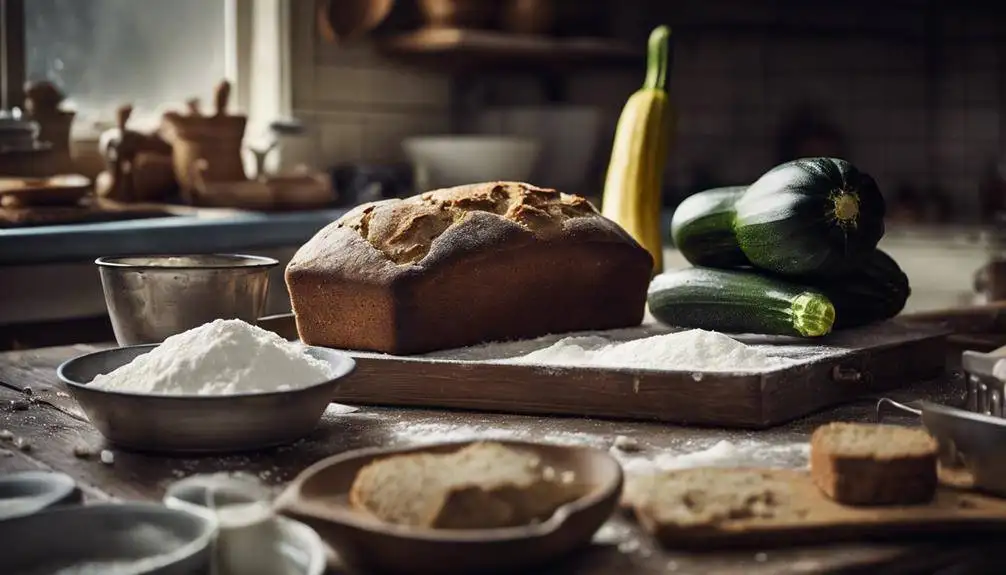
One essential tip for perfecting your zucchini bread is to verify you properly squeeze out the excess moisture from the grated zucchini before mixing it into your batter. This step is vital for achieving the right moisture retention and avoiding a soggy loaf. You can use a clean kitchen towel or cheesecloth to wring out the zucchini effectively.
Next, pay attention to your baking temperature. Preheat your oven to 350°F (175°C) for best results. A consistent temperature guarantees even baking and helps achieve that golden-brown crust.
If you’re looking to make ingredient substitutions, consider using applesauce or Greek yogurt in place of oil for a healthier twist. These alternatives can enhance the flavor while improving the texture of your bread. You can also add a pinch of cinnamon or nutmeg for flavor enhancements that elevate your zucchini bread.
Don’t forget about texture improvement! Adding chopped nuts or chocolate chips can give your bread a delightful crunch and extra richness.
As for serving suggestions, enjoy your zucchini bread warm with a spread of cream cheese or butter. It pairs beautifully with a cup of tea or coffee, making it a perfect snack or breakfast option.
Common Mistakes to Avoid
Avoiding common mistakes can make all the difference in baking a delicious zucchini bread. One of the most significant errors is not correctly managing the zucchini texture. If you use large, watery zucchinis, your bread can end up soggy. Opt for medium-sized zucchinis and grate them finely to achieve a better moisture balance. Remember to squeeze out excess moisture using a clean cloth or paper towel before adding the zucchini to your batter. This simple step can enhance the overall consistency of your bread.
Another mistake is misjudging the flour measurement. Too much flour can lead to dry bread, while too little may result in a dense loaf. Always use the spoon-and-level method to measure your flour accurately. Additionally, don’t skip the eggs. They provide essential structure and moisture to your bread.
Overmixing is another pitfall to avoid. Once you combine the wet and dry ingredients, mix just until you see no streaks of flour. Overmixing can develop gluten, making your bread tough instead of tender.
Lastly, be cautious with your baking time. Opening the oven door too frequently can disrupt the baking process, leading to uneven cooking. Use a toothpick to check for doneness, ensuring it comes out clean before pulling your bread from the oven. By keeping these common mistakes in mind, you’ll be well on your way to baking a perfect loaf of zucchini bread.
Serving and Storing Zucchini Bread
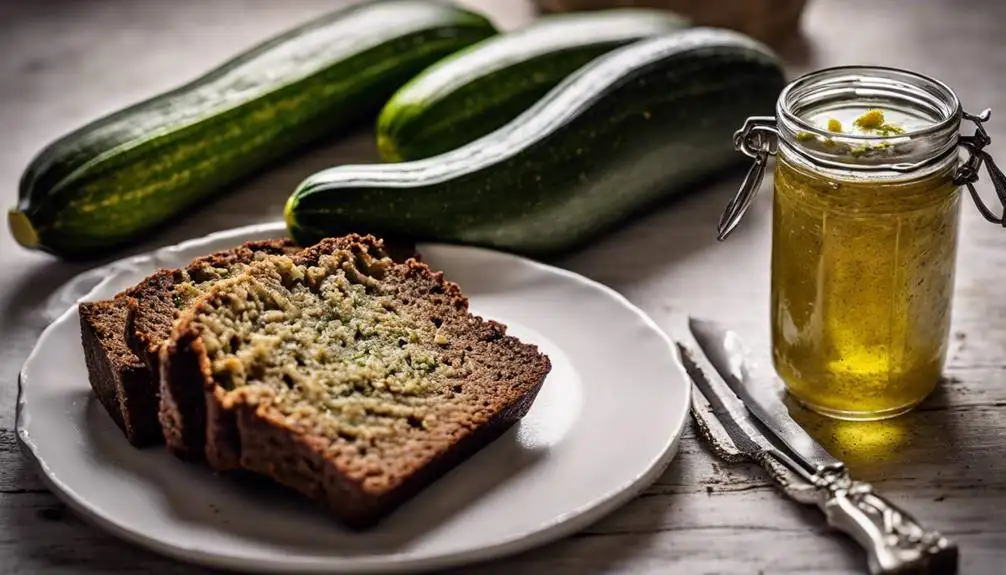
Serving and storing zucchini bread properly guarantees you enjoy its delicious flavors for days to come. Once your bread has cooled, slice it into even pieces for easy serving. You can serve it plain or get creative with some delicious serving suggestions. A pat of butter or a drizzle of honey enhances its sweetness, while a dollop of cream cheese or Greek yogurt adds a creamy texture. If you’re feeling adventurous, try pairing it with fresh fruit or nuts for a delightful snack.
When it comes to storage tips, keeping your zucchini bread fresh is crucial. If you plan to eat it within a few days, wrap it tightly in plastic wrap or aluminum foil and store it at room temperature. This keeps it moist and flavorful. For longer storage, consider freezing it. Slice the bread first, then wrap each slice in plastic wrap and place them in a freezer-safe bag. It can last up to three months in the freezer. When you’re ready to enjoy, simply thaw the slices at room temperature or pop them in the toaster for a warm treat.
Remember to check for any signs of spoilage, like mold or an off smell, before indulging. Following these serving suggestions and storage tips will guarantee that your zucchini bread remains a tasty delight, whether you’re enjoying it fresh or a few days later.
History And How To Make Zucchini Bread; Frequently Asked Questions
Can I Substitute Zucchini for Other Vegetables in Bread Recipes?
Yes, you can substitute zucchini with other vegetables in bread recipes. Carrots, squash, or even sweet potatoes make great zucchini alternatives, adding moisture and flavor to your vegetable breads while keeping them delicious and nutritious.
How Long Does Homemade Zucchini Bread Last in the Freezer?
Homemade zucchini bread lasts about three months in the freezer. For best results, wrap it tightly. When you’re ready to enjoy it, thaw in the fridge overnight for ideal texture and flavor.
Is Zucchini Bread Gluten-Free?
Zucchini bread isn’t typically gluten-free, but you can use gluten-free alternatives like almond or coconut flour. Plus, incorporating zucchini adds excellent nutrition, boosting fiber and vitamins while keeping it moist and delicious.
Can I Use Yellow Squash Instead of Zucchini?
Yes, you can use yellow squash instead of zucchini! Both zucchini varieties have similar textures, and their flavors blend well in recipes. Just remember, the taste might be slightly different, but it’ll still be delicious!
What Types of Flour Can Be Used in Zucchini Bread?
You can use various flours in zucchini bread, like whole wheat or almond flour. These flour alternatives not only add unique flavors but also boost nutritional benefits, making your bread healthier and more satisfying.
Conclusion
To sum up, zucchini bread isn’t just a delicious treat; it’s a tasty way to celebrate a rich history and embrace healthy eating. With its roots tracing back to the 1960s and its evolution as a quick bread, you can easily whip up your own version at home. By following the tips and avoiding common mistakes, you’ll create a moist, flavorful loaf that’s perfect for any occasion. So, grab those zucchinis and start baking today!





